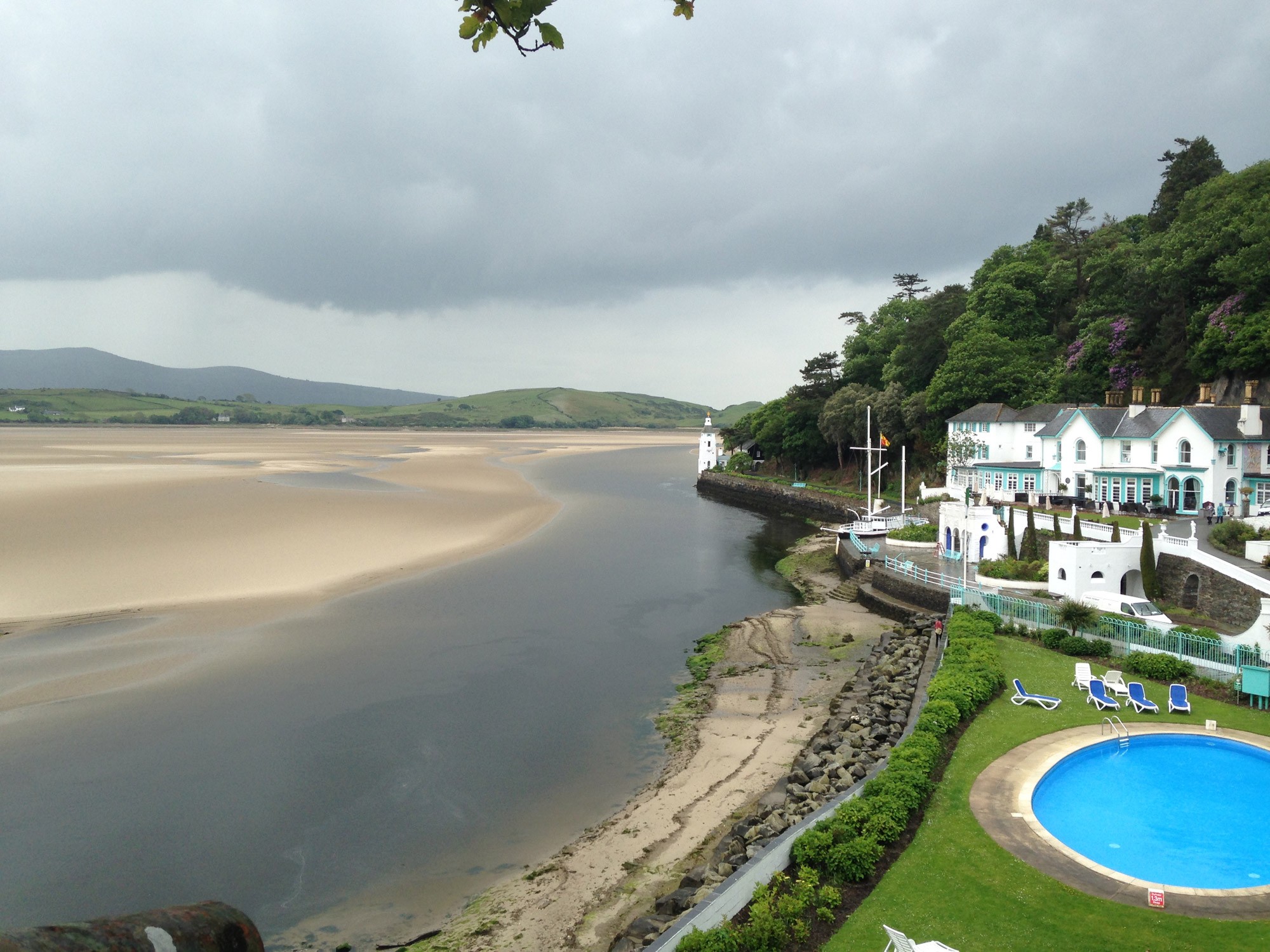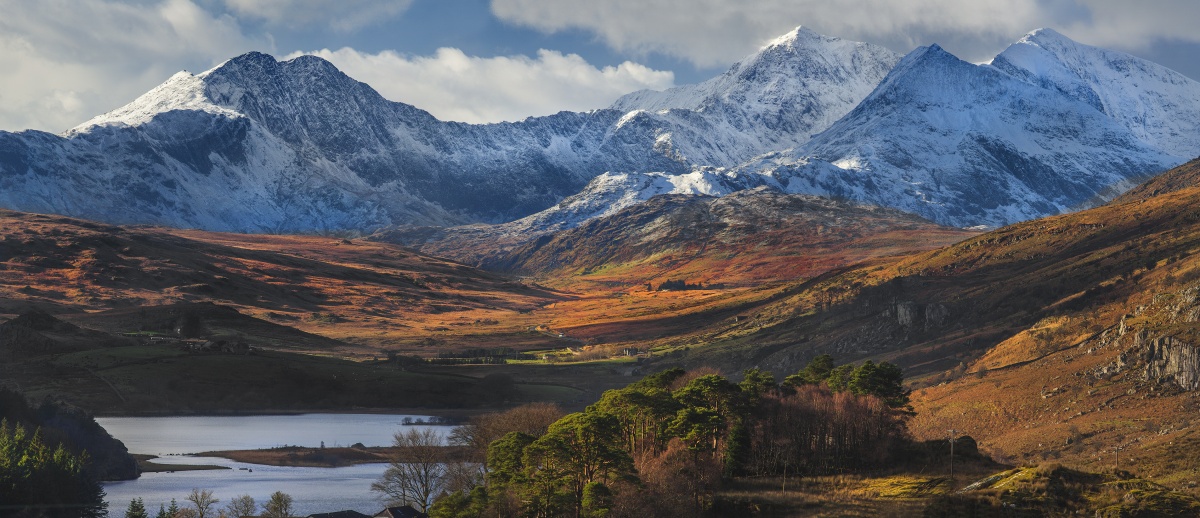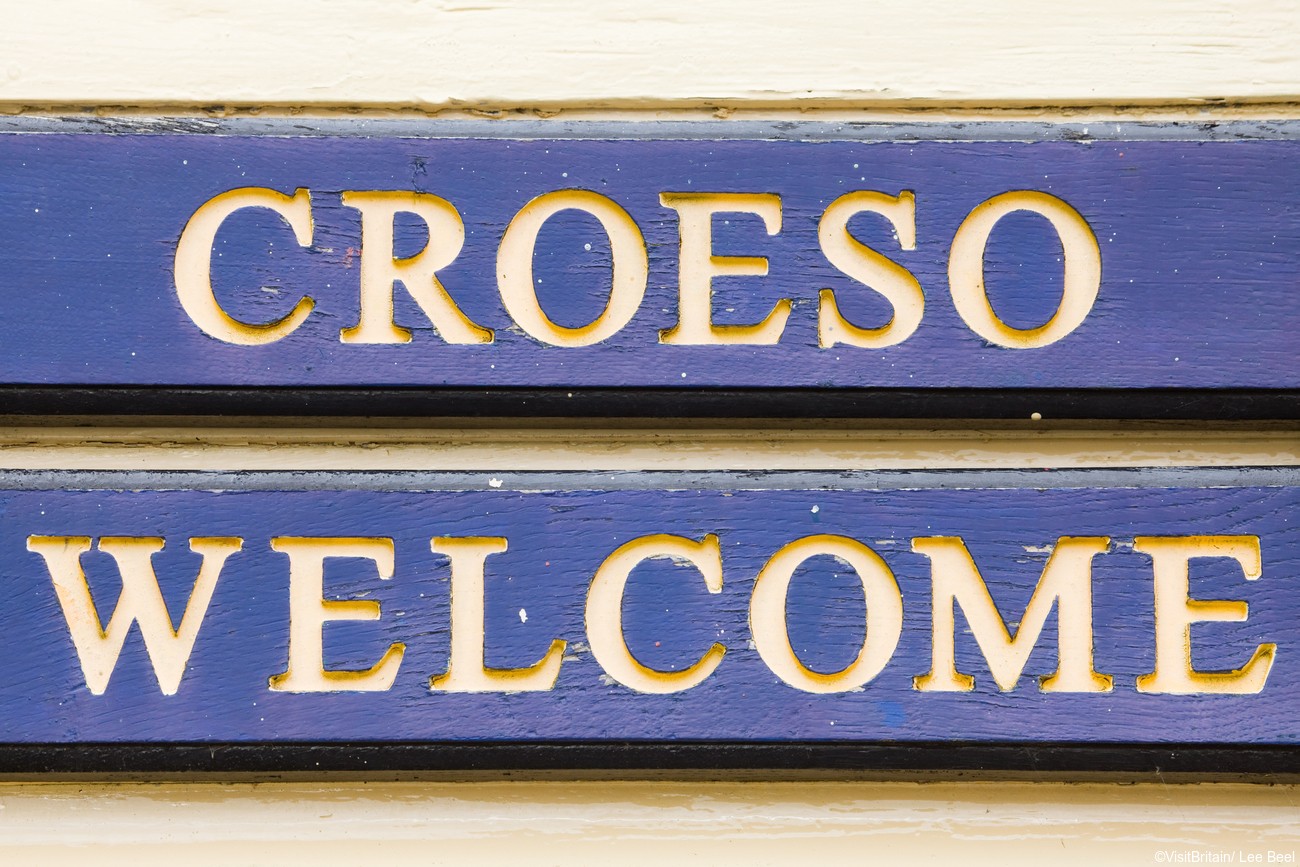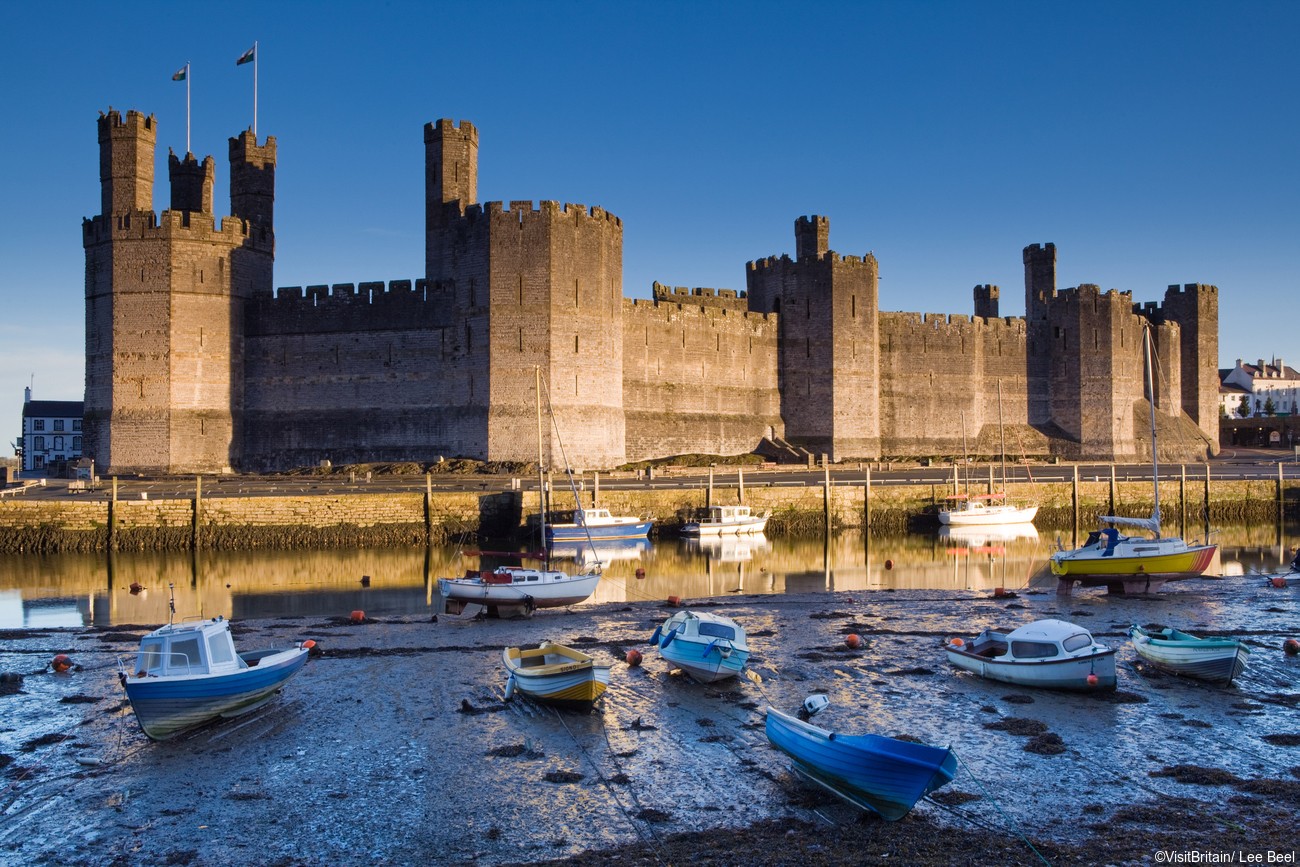If you’re a fan of nature and heritage, then let’s face it, you’re probably head-over-heels in love with Wales already.
Known for its rugged, windswept coastline and mountain-rich national parks, there’s also plenty of distinctive culture to be found in Wales. The Welsh language is Britain’s oldest tongue, and there are beautiful castles to be admired in every direction.
Meanwhile, the vibrant capital city of Cardiff has been awarded European City of Sport status twice, with a bursting annual programme of arts, music and cultural events.
So if you’re ready to discover more about this enduringly lovable country…then Croeso i Gymru (Welcome to Wales!)
Main image: Views around stunning Snowdonia, courtesy of St Curig’s Church

Above: The stunning, expansive sands at Portmeirion, North Wales
1. Fabulous beaches
The National Trust cares for 157 miles of the Welsh coast, where you’ll find some of the world’s finest beaches. The glorious Barafundle Bay, accessible only on foot, is the perfect ‘get away from it all’ seaside escape.
Snowdonia’s long and picturesque Barmouth beach is the place to take the kids, complete with donkey rides and a vintage steam railway, while the spectacular Rhossili Bay has been awarded the accolade of Britain’s best beach. Set in an area of outstanding natural beauty, the views from your beach towel are exceptional…whatever the weather.
In the mood for a windswept walk instead? Then you’re in for a treat, as the scenic Wales Coast Path tracks the entire length of the country (hint: take a sturdy pair of boots!)

Above: Awesome scenery around Snowdonia, courtesy of St Curig’s Church, Gwynedd
2. Mountains
Wales just wouldn’t be Wales without its distinctive mountain landscapes, naturally carved over 10,000 years ago during the Ice Age.
These days, the Welsh mountains are a exhilarating hive of activity, from the rocky crags of Snowdonia to the genteel, grassy Brecon Beacons. Over 500,000 people make their own way to the top of Snowdon every year; though don’t worry if the idea of climbing a mountain fazes you. You can always take the famous train instead!
One of the wildest and most remote corners of Wales, the Black Mountain Range is a must-visit for thrill-seekers. Once you’ve hang-glided over the glinting lakes and sweeping glacier-carved slopes, you’ll be left with memories to last forever.

3. Dylan Thomas
“Do not go gentle into that good night…”
You couldn’t possibly talk about the Welsh arts and culture scene without mentioning the legendary poet and writer Dylan Thomas.
A frequent visitor of the pubs, coast and cinemas of Wales, Thomas spent a great deal of his life in Laugharne, where you’ll find plenty of attractions that are dedicated to him.
The two-mile Dylan Thomas Birthday Walk is a unique introduction to the writer’s life, with information boards dotted all around (plus, if you do the walk on your own birthday then you’re entitled to a few goodies along the way!)
The Laugharne Boathouse, now a museum, is filled with memorabilia from the time when Dylan Thomas lived there with his family in the 1950s. Take a look around, then head to Browns Hotel for a drink – the bay window is where Thomas whiled away many a lazy afternoon.

4. Welsh Cakes
Bold, honest and hearty, there’s just so much to love about Welsh cuisine. Think bubbling Welsh rarebit, Glamorgan sausages, mouthwatering lamb, salty cockles and coal-black beef.
But it’s those tasty little Welsh cakes, flavoured with spice and fruit, that have our hearts. Ridiculously simple to make (you probably made them at school, in fact!), they’re traditionally cooked on an iron griddle.
Looking for another teatime treat?Then bara brith (meaning “speckled bread”) is a deliciously moist fruit loaf that goes down extremely well with a cuppa or two.

Above: Bi-lingual station sign at the Bala Lake Railway ©VisitBritain/ Lee Beel
5. The Welsh Language
If you can pronounce the name of the Welsh village Llanfairpwllgwyngyll, then you’re probably an aficionado of the language.
You’re in good company if so. As Britain’s oldest language, Welsh has evolved over 4,000 years, with the word cymry used to describe the people of Wales as far back as the seventh century.
Not that the Welsh language was free of detractors. King Henry VIII famously forbade the use of it back in 1536, while the infamous Welsh Not punished schoolchildren who dared to speak the language during the 19th century.
Happily, these days more than a fifth of the Welsh population speak the mother tongue, and throughout the country you’ll spot plenty of newspapers, TV shows and road signs in both English and Welsh.

Above: Caernarfon Castle, overlooking the Menai straits ©VisitBritain/ Lee Beel
6. Castles
Telling tales of the country’s defensive past, travelling through the Civil War to Tudor banquets and Victorian decadence, there is much to learn from a tour of the castles of Wales.
(And with around 600 castles to choose from, the possibilities for sightseeing are almost endless!)
The round towers and breathtaking gatehouse at Raglan Castle are sure to captivate you, while the atmospheric National Trust-run Dinefwr Castle dates all the way back to the 12th century, with deer dotted around its stunning landscape park.
The imposing Caernarfon Castle is an absolute must-see when you’re in Wales, built by Edward I on a former Roman fort. Caerphilly, meanwhile, boasts the largest castle in the country.
Small, yet perfectly formed, there’s more to see, do and experience in Wales than one holiday could possibly take. Yet that only means you’ll have an endless list of reasons to return…again and again.
Take a look at our pick of Welsh Host Unusual places to stay below – each one truly unique – and for yet more unique and unusual places to stay in Wales visit our dedicated page!



































